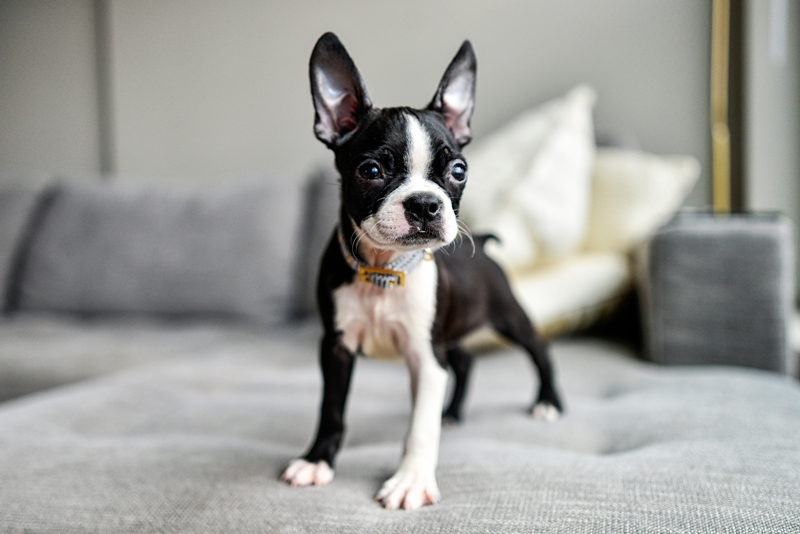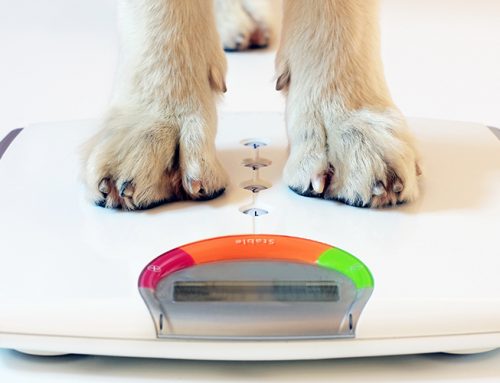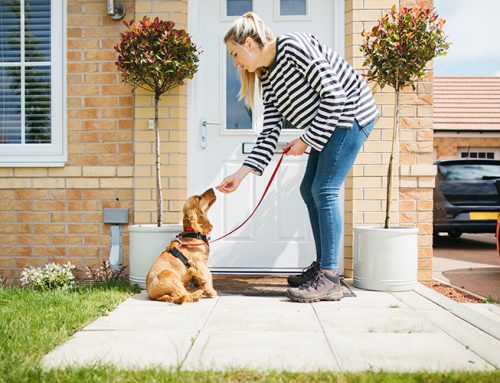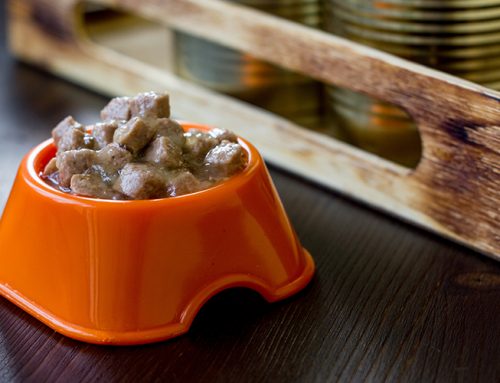Puppies, even puppies from the same litter, grow at different rates. This is particularly true when you start looking at different breeds. Small breed puppies reach their full size long before large breed puppies do.
New puppy owners have a lot to think about: is my puppy eating the right food? Is my puppy growing at the right speed? Is my puppy getting enough food? Too much? Why is my puppy eating weird and gross stuff he or she finds outside?
Another thing new owners worry about is if their puppy is too thin, or veering towards overweight. Is your puppy looking a little on the thin side?
Puppies tend to lose their chubby puppy-ness at around eight to 10 weeks old and start to lean out. This is a natural phase of growth. Puppies may veer from skinny to slightly overweight at various points in their growth cycle.
Puppies shouldn’t grow too fast: puppy food is formulated to encourage them to grow at an optimal rate, which doesn’t mean as fast as possible. Puppies that grow too quickly are at risk of health and skeletal issues.
There is a useful tool called the body condition score that vets use to assess how puppies, and full-grown dogs, are doing with their weight. If your puppy has a score of about four or five (you can feel the ribs, but not see them, and your puppy has an abdomen tuck from their rib cage to their back legs) you have nothing to worry about!

But if your puppy has visible ribs, lumbar, vertebrae, and pelvic bones, he or she probably needs to put on weight. Puppies should reach about one half of its weight by around four months old — this varies from breed to breed, so talk to your breeder or another expert to see what a reasonable metric for your specific puppy is. Some breeds, like the Greyhound, tend towards being lean and ribs being slightly visible may not be a concern.
The most likely cause of a puppy not gaining enough weight is diet.
Rule out medical conditions that could be causing your puppy to be underweight
One of the ‘joys’ of pet ownership is the risk of parasites. Puppies can pick up a parasite like a roundworm or a hookworm from their environment or from eating something they shouldn’t have — like another animal’s feces. Other types of worms are whipworms, tapeworms, and heartworms. Vets can easily treat this problem or even prescribe medications to prevent worms in the first place. Your puppy may have other symptoms if it has a worm infection, like lethargy or butt itching on your carpet. You can sometimes see worms in your puppy’s feces. If you spot them, it’s time to make a vet appointment.
Intestinal parasites can cause malnutrition, weight loss, vomiting, diarrhea, and anemia.
There are other medical conditions that can cause weight loss or an inability to put on weight. If your puppy is struggling, it’s critical to visit a vet to rule out serious illnesses like cancer, abdominal diseases, diabetes, and pulmonary conditions. These conditions are rare in puppies, but should still be investigated.
Certain medications can also cause dogs to lose weight.
Ensure your puppy is getting enough calories
Puppies should be on a puppy specific food or food that is labeled “for all ages” so that they are getting enough fat and protein — two nutritional requirements necessary for weight gain. Regular adult dog food won’t have enough calories per bite for a growing puppy! Worse, they won’t be getting enough fat or protein, both of which are critical to muscle and brain development.
If your pup has a voracious appetite and isn’t putting on weight, try feeding it a larger portion or changing to a more calorie-dense food (after you’ve ruled out medical issues). Puppy food needs to be loaded with fat, protein, vitamins, and minerals and meet the guidelines laid out by the American Association of Feed Control Officials.
Give your puppy a few days on a new food or larger portion size to see if your pup slowly puts on weight. But keep an eye on your puppy: some breeds can become quickly overweight.
Also, try spreading your pup’s daily meal consumption over two or three meals, instead of one large one. PetMD notes that feeding smaller, more frequent meals may help with weight gain.
Cut back on your puppy’s exercise
Puppies need physical and mental exercise. But it’s possible to overdo it and if your pup is getting too much exercise, it might not be getting enough calories to fill the deficit. If you think this is the case, focus on training and mental stimulation instead of physical activity.
There’s not a magic number in terms of minutes or hours a day for puppy exercise. Vets, breeders, and trainers agree that too much exercise is as bad as insufficient exercise, and everyone has a different idea about what the perfect amount is.
To start, consider your puppy’s breed. High energy dogs like Labs and Collies may need more exercise than a Pug or a Bulldog. Large breed dogs need special considerations because they are more prone to hip dysplasia. The American Kennel Association recommends that giant breed dogs shouldn’t do agility until they are fully grown.

Your pup will indicate when it’s had too much activity: if you go for a 30-minute walk and your puppy spends the rest of the day sound asleep, it was probably too much. Try a 20-minute walk for the next one and see how your puppy reacts. A puppy is growing and that requires a lot of caloric energy. If your puppy balks at going outside or keeps flopping into the grass instead of chasing after you, it probably needs a break and a little less exercise.
Another option is to give your puppy five minutes of exercise per month of age, twice a day — that means 15 minutes for a three-month-old puppy or half an hour for a six-month-old puppy.
Start with short walks and frequent breaks, and try out fun games like tugging, wrestling, and chasing. Three short exercise-related outings are better than one long one. Puppies love variety, and it’s a good way to strengthen your bond.
Make sure your puppy isn’t stressed or anxious
Anxious dogs sometimes don’t put on weight, or they lose weight. You may need to keep an eye on your puppy for anxious behaviors like:
barking or howling
panting and pacing
shivering
running away or cowering
self-harm (licking or chewing)
destructive behavior
not eating
peeing in the house
If you think your puppy is anxious, you need to treat the underlying cause of the anxiety.
Also, make sure your dog is eating its whole meal. If you have other dogs, or cats, in the house, they could be finishing off your puppy’s dinner, especially if she or he is a slow eater.






